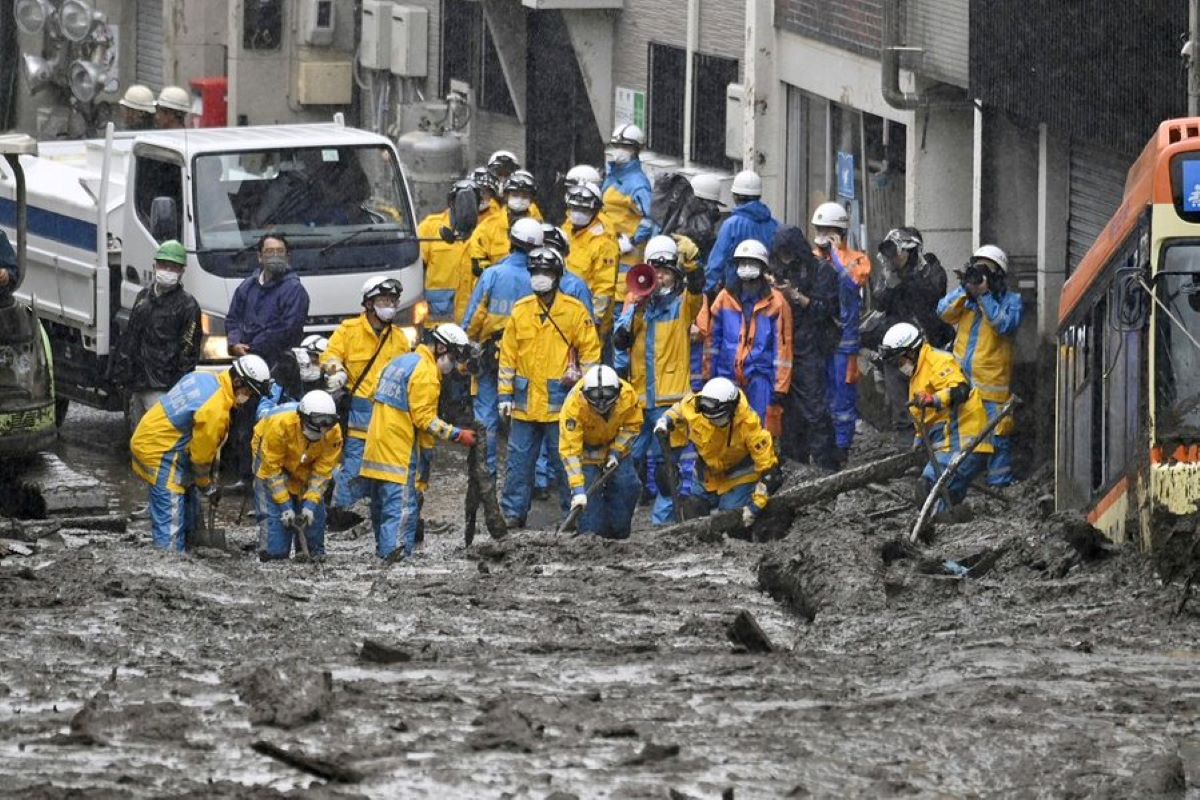Rescue workers scoured crumbled houses, mud and debris after a giant landslide tore through a Japanese seaside resort town, killing at least three as some 80 people remain missing.
The disaster is an added trial as authorities prepare for the Tokyo Olympics, due to start in less than three weeks, while Japan is still in the midst of the coronavirus pandemic.
Advertisement
At least 20 were initially described as missing. Adding to confusion over casualties is that Atami is a vacation city, with many apartments and homes unoccupied for long parts of the year, their listed residents living in other places.
Others may be away visiting relatives or friends or not answering the phone, officials said. They hope to get in touch with more of those unaccounted for on Monday.
The landslide occurred on Saturday after several days of heavy rains, swelling a small stream into a torrent of mud and rock that ripped through the streets.
Bystanders were heard gasping in horror on cell phone videos taken as it happened.
Like many seaside and mountain towns in Japan, Atami is built on steep hillsides, its roads winding through bits of forest and heavy vegetation.
With other parts of Japan expecting heavy rains in what is known as Japan’s rainy season, authorities elsewhere were also surveying hillsides.
Three coast guard ships, and six military drones were backing up the hundreds of troops, firefighters and other rescue workers toiling in the rain and fog in search of possible survivors.
The mudslide struck Atami’s Izusan neighborhood, known for its hot springs, a shrine and shopping streets. Atami is about 100 km southwest of Tokyo.
Naoto Date, an actor who happened to be visiting the Izusan area after a filming session, woke up to sirens in the neighborhood when he was in his house, which is next to his mother’s. Both of them were safe, but he made sure his mother walked to a nearby community center to evacuate, and he called all his friends and schoolmates and made sure they’d survived.
So far, Date said his friends all had safely evacuated, and his mother moved to a hotel in a safer location. Date, who lives in Tokyo, said he was staying away from evacuation centers due to concern about the coronavirus.
Even though his house was located in a hazard area, he said he never imagined it would be hit by a disaster.
“I used to take it not so seriously and I regret that,” he said. He filmed scenes in his neighborhood with muddy water gushing down and rescuers wading through knee-deep mud.
He also went to the sea where toppled cars were floating with debris from destroyed homes.
“Many people saw their homes and belongings and everything washed away. They won’t be able to return home, and it must require an unimaginable effort to recover.”
Twenty-three people stranded by the mudslide were rescued, including three who were injured.
Shizuoka’s governor, Heita Kawakatsu told a news conference on Sunday that land development upstream may have been a factor in the mudslide.
Citing a preliminary examination by drone, Kawakatsu said massive amounts of soil that had been heaped up in the construction area had all washed down.
Kawakatsu said he will investigate the land development. Media reports said a planned housing development was abandoned after its operator ran into financial problems.











